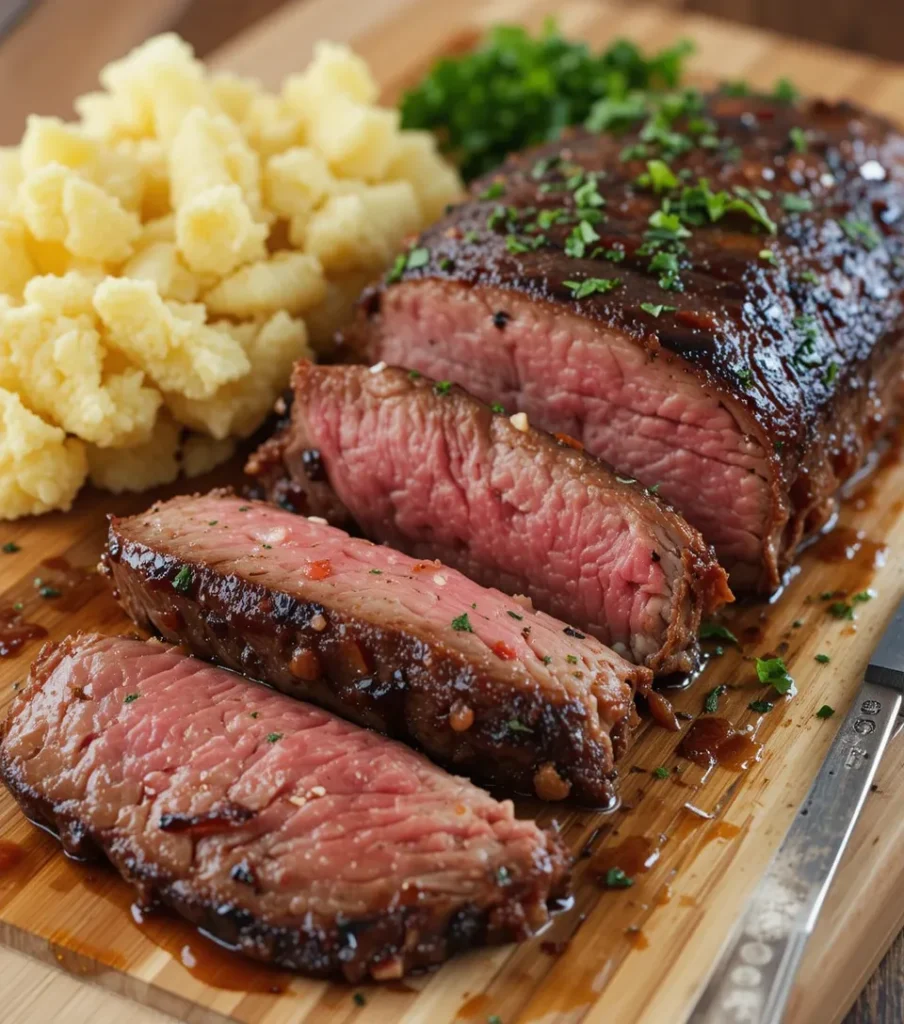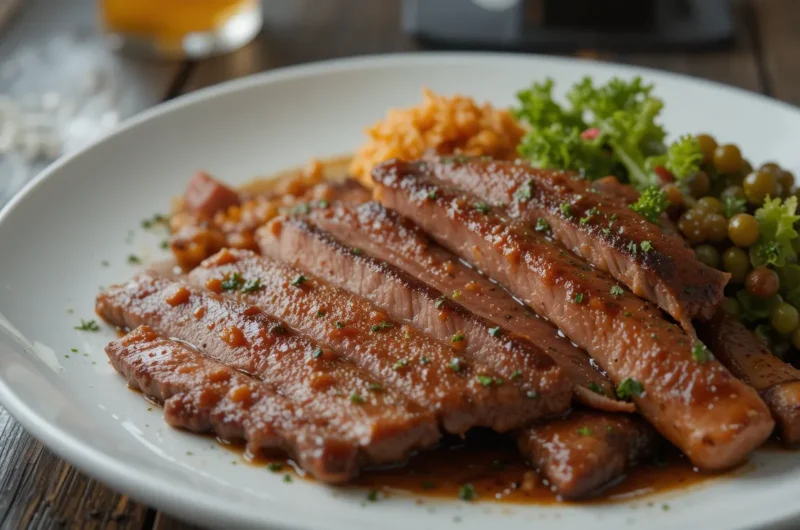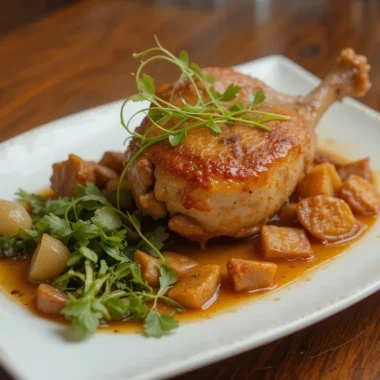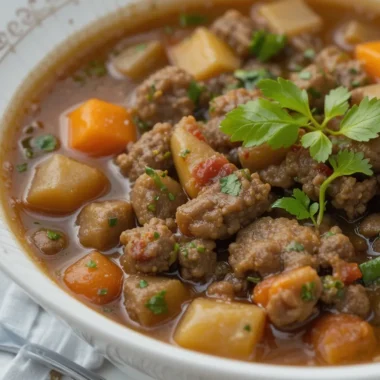Beef brisket is a culinary masterpiece that turns an ordinary cut of meat into a mouth-watering feast. It has been a staple in American kitchens for generations. It offers a rich, tender beef experience that will impress your family and friends.
Preparing a perfect beef brisket requires patience, technique, and a passion for cooking. Whether you’re a backyard barbecue enthusiast or a home chef looking to elevate your cooking skills, this guide will walk you through creating a tender beef brisket that melts in your mouth.
Table of Contents
Understanding Beef Brisket
Beef brisket is a flavorful cut that turns from tough to tender with the right cooking. It comes from the lower chest of a cow. To get the best flavor, it needs special cooking methods.
- Point Cut: The thicker, fattier part with deep flavor
- Flat Cut: Leaner and even, perfect for slicing
Anatomy of a Brisket
A full packer brisket weighs 10 to 14 pounds. Chefs and home cooks love it for its rich taste and flexibility. It needs special cooking to soften its tough fibers.
Selecting Your Brisket
When picking beef brisket, keep these points in mind:
- Beef Grade:
- Prime: Highest fat content and marbling
- Choice: Good quality with moderate marbling
- Select: Less recommended for smoking
- Fat Content: Choose meat with good marbling
- Source: Local butchers or stores like Costco are best
Premium Options
For a top-notch experience, try Wagyu brisket. It has amazing marbling and taste but costs more. Knowing these details helps pick the best brisket for your dish.
Preparing the Brisket
Getting your beef brisket ready for cooking is key. From thawing to seasoning, each step is important. It helps make a flavorful brisket that will wow your guests.
Thawing Frozen Brisket Safely
Thawing your brisket right is vital for safety and quality. Here’s how to thaw it correctly:
- Take the brisket out of the freezer 24-48 hours before cooking
- Put it in the fridge on a lower shelf
- Keep it in its original packaging
- It takes about 24 hours to thaw for every 5 pounds of meat
Trimming Excess Fat
Trimming fat is important for a perfect brisket. Leave about 1/4 inch of fat cap for moisture and flavor.
- Use a sharp boning knife
- Trim hard fat that won’t melt during cooking
- Remove uneven edges for even cooking
- Keep some fat for flavor and moisture
Seasoning Your Brisket

A good seasoning can turn a simple cut into a tasty meal. For a classic taste, use a simple rub:
- Coarse Kosher salt
- Coarse black pepper
- Optional: Garlic powder
Season it well, making sure it’s evenly coated. Let the brisket sit with the rub for at least an hour. This helps the flavors soak in better.
Essential Cooking Techniques
Learning to cook beef brisket is all about mastering different techniques. These methods turn a tough cut into a delicious treat. Whether you’re smoking or slow-cooking, each way brings out unique flavors and textures.
Smoking the Brisket: A Pitmaster’s Guide
Smoking beef brisket adds deep, smoky flavors. To get it right, keep your smoker at 200-250°F. Here are some key steps:
- Choose hardwood chips like hickory or oak for that smoky taste
- Wrap the brisket in foil when it hits 160-170°F
- Keep an eye on the meat’s internal temperature
Braising for Maximum Flavor Infusion
Braising makes slow-cooked beef brisket tender and full of flavor. It cooks the meat in liquid at low heat, breaking down connective tissues slowly.
- Use a Dutch oven or heavy roasting pan
- Add beef broth, wine, or other liquid for moisture
- Cook at low temperatures (250-300°F) for several hours
Slow Cooking vs. Oven Roasting
Both slow cooking and oven roasting can make your brisket delicious. Slow cookers keep the heat steady, while oven roasting lets you control temperature and browning.
| Method | Cooking Time | Temperature |
|---|---|---|
| Slow Cooker | 8-10 hours | Low (200°F) |
| Oven Roasting | 4-6 hours | 250-300°F |
Remember, no matter the method, always slice your brisket against the grain. This makes it tender and delicious.
Choosing the Right Cooking Tools
To make the best beef brisket, you need more than skill. You also need the right tools. These tools help with flavor, tenderness, and the cooking experience.
Professional pitmasters say quality tools make a big difference. They turn a simple brisket into a dish to remember. Let’s look at the key tools for making delicious brisket.
Best Smokers for Brisket
Finding the right smoker is key for perfect BBQ beef brisket. Here are some top choices:
- Offset smokers for traditional barbecue lovers
- Electric smokers for easy temperature control
- Pellet smokers for easy wood-fired flavor
Recommended Pots and Pans
If you can’t smoke, other methods can also work well:
| Cooking Method | Temperature Range | Recommended Cookware |
|---|---|---|
| Oven Roasting | 225-250°F | Heavy-duty roasting pan with lid |
| Stovetop Braising | 225-250°F | Dutch oven with tight-fitting lid |
Essential Thermometers
For the best brisket, precision is vital. Get a good meat thermometer for perfect doneness:
- Instant-read digital thermometers for fast checks
- Wireless thermometers for monitoring without opening the chamber
- Probe thermometers that stay in the meat
Pro tip: For that tender texture, aim for 195-205°F. Accurate temperature is key to a great brisket.
Cooking Times and Temperatures
To get a juicy beef brisket, you need to control the temperature and timing well. Start by heating your oven to 250°F. This helps cook the brisket slowly and evenly. Cook your brisket for about 1 hour to 1 hour and 15 minutes per pound, depending on its size.
Keep an eye on your brisket’s internal temperature. Start checking after 2 hours, then every 30-45 minutes. Aim for 180°F first, but keep cooking until it hits 200-202°F. For a 5-pound brisket, cooking time will be 5 to 6.25 hours.
For the last step, raise the oven temperature to 350°F for 45 minutes. This crisps the fat cap. After cooking, let the brisket rest for 30 minutes. This step makes the meat juicy and flavorful. The temperature should be around 203°F after resting.
Remember, cooking times change with brisket size. A 3-pound brisket cooks in 3 to 4 hours. A 15-pound brisket, cut into smaller pieces, might need 7 to 8.5 hours at 225°F. Always use a meat thermometer for the best results.
FAQ
How long does it take to cook a beef brisket?
What’s the best way to keep my brisket tender?
Should I wrap my brisket during cooking?
What internal temperature indicates a perfectly cooked brisket?
Can I prepare a brisket in advance?
What’s the best cut of brisket to buy?
How do I prevent my brisket from drying out?
What are the best wood types for smoking brisket?
Did You Try This Recipe ?
There are no reviews yet. Be the first one to write one.








